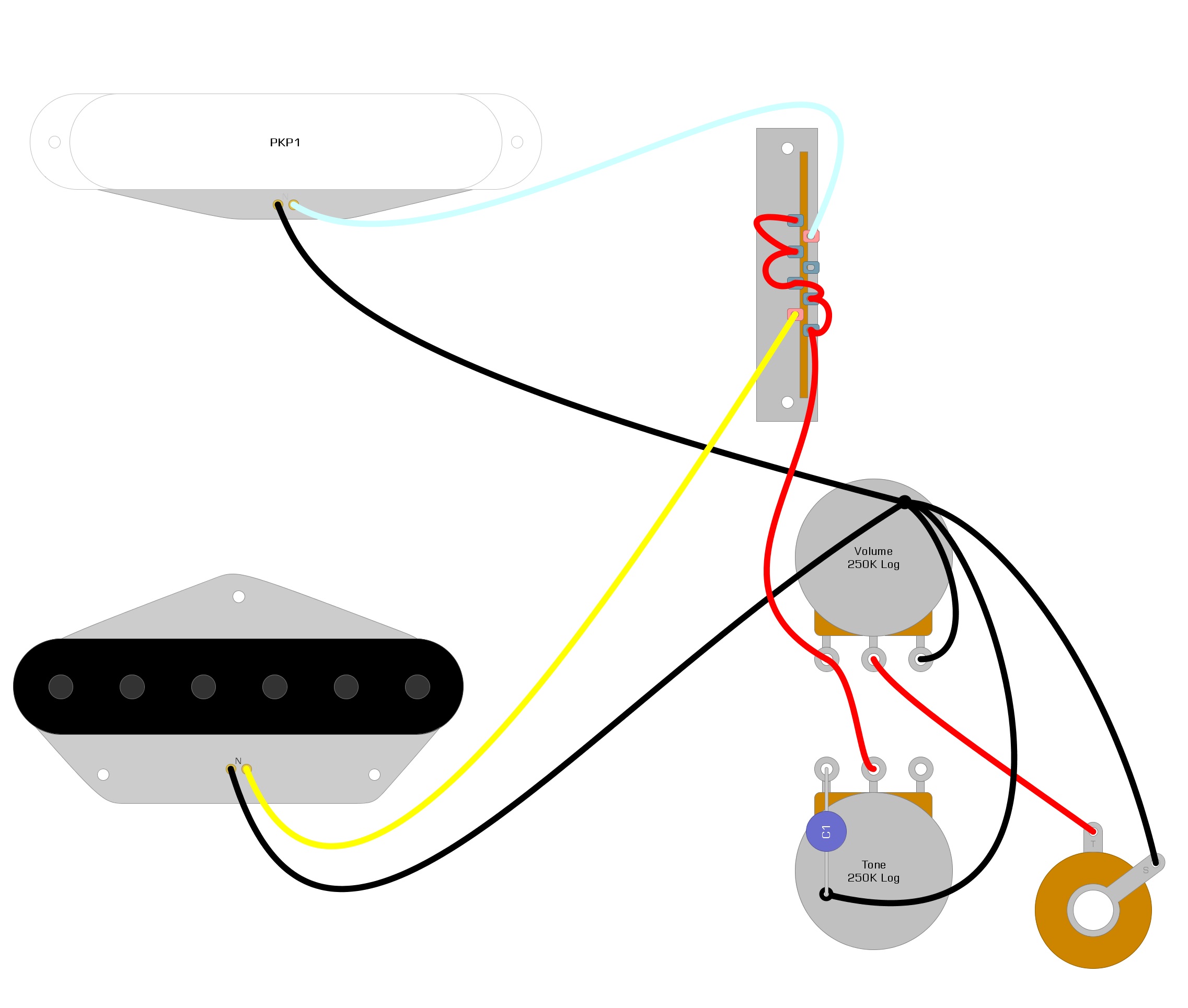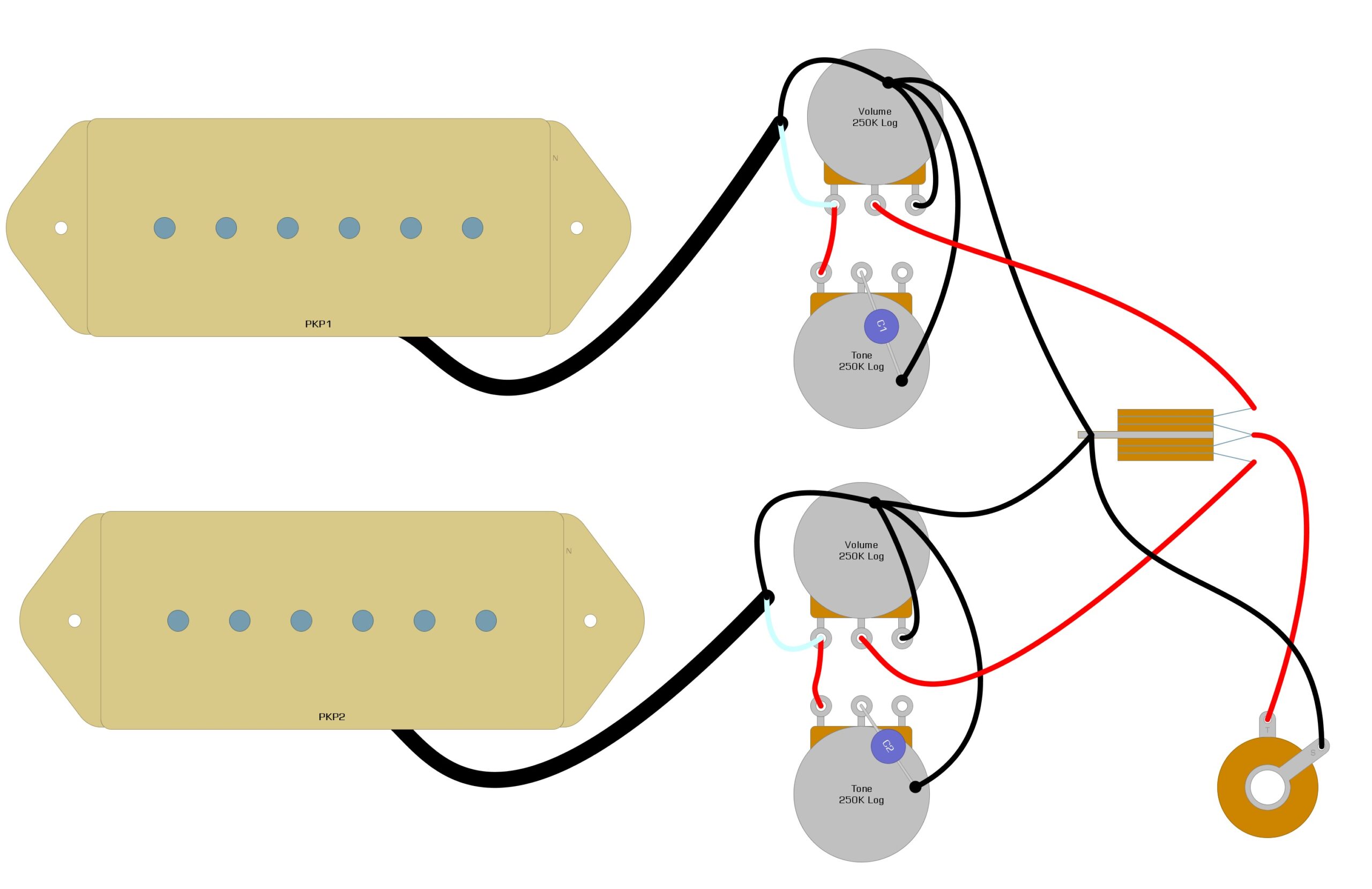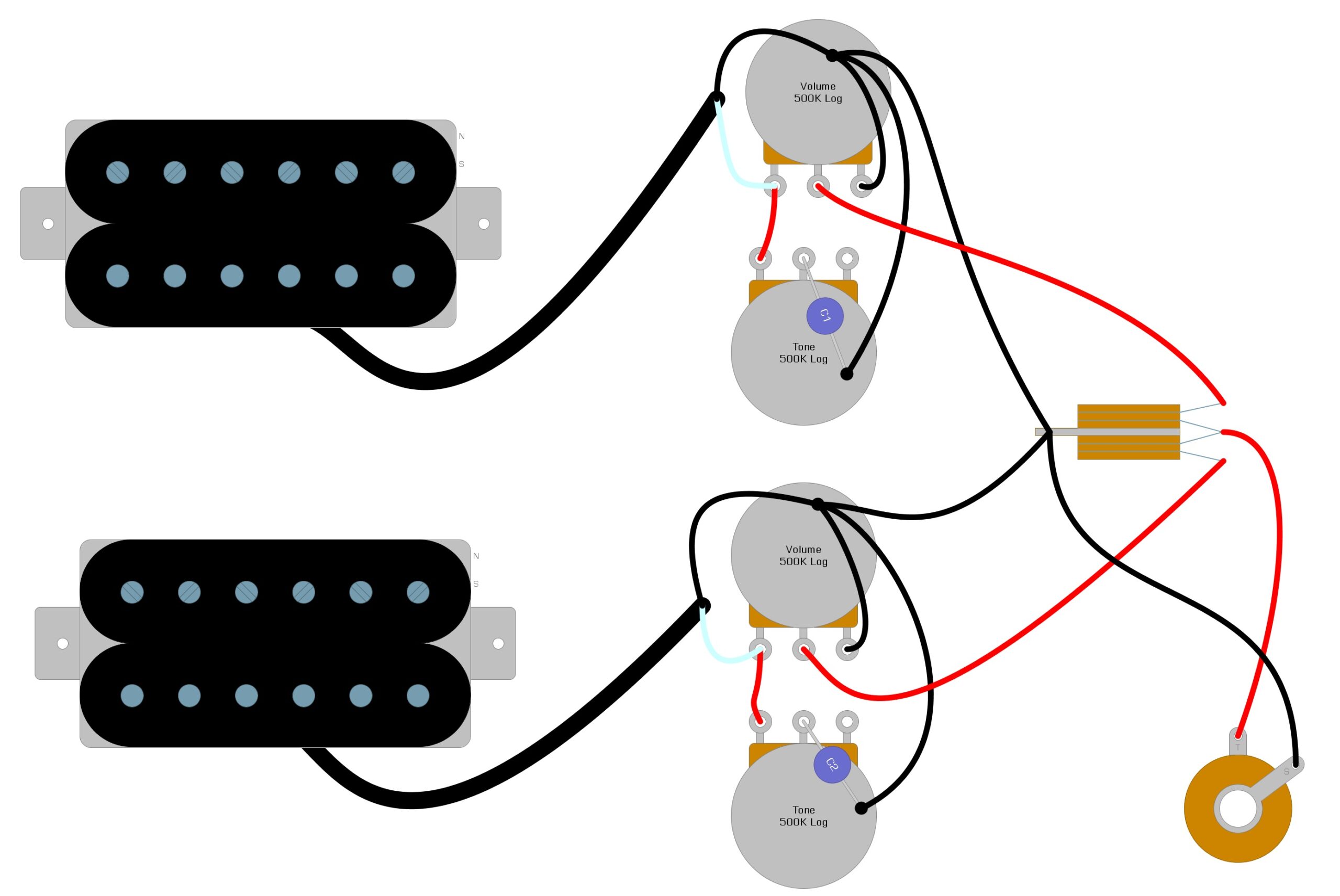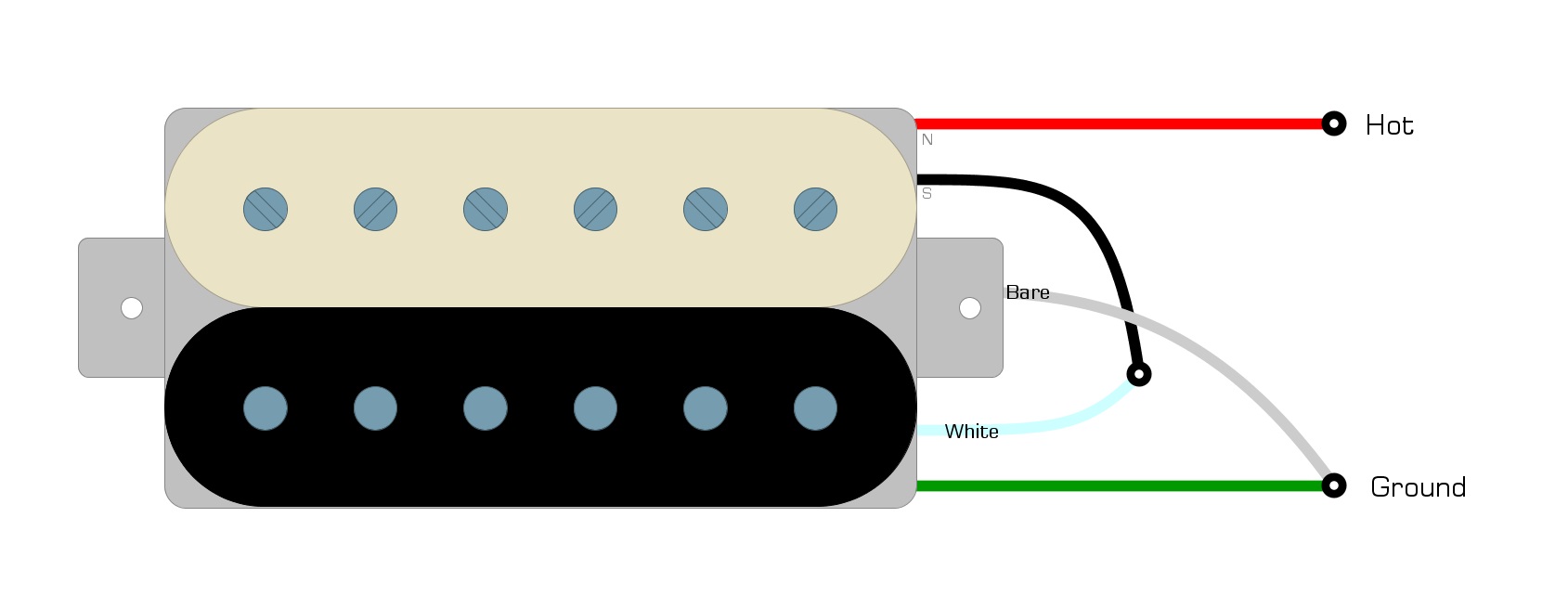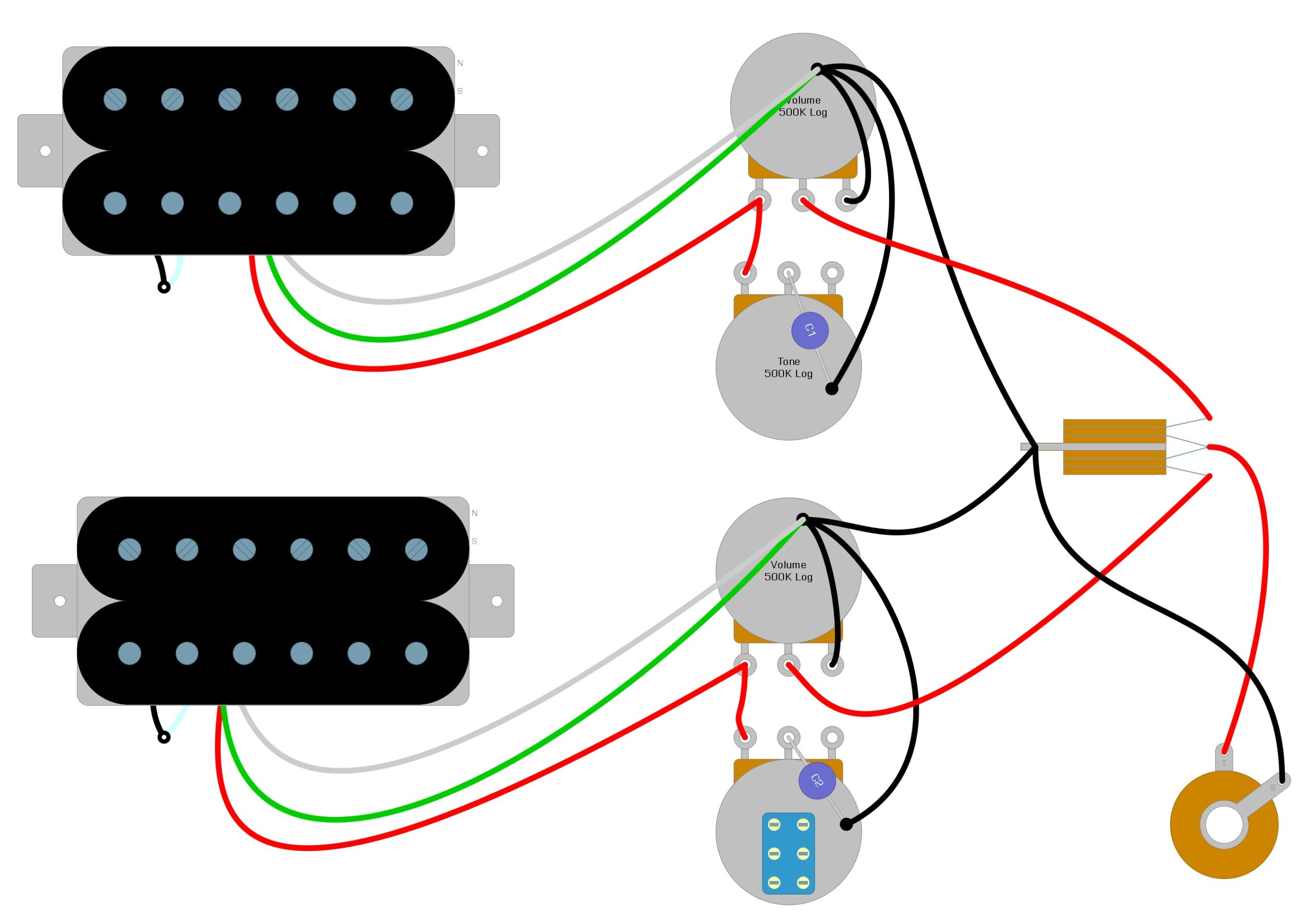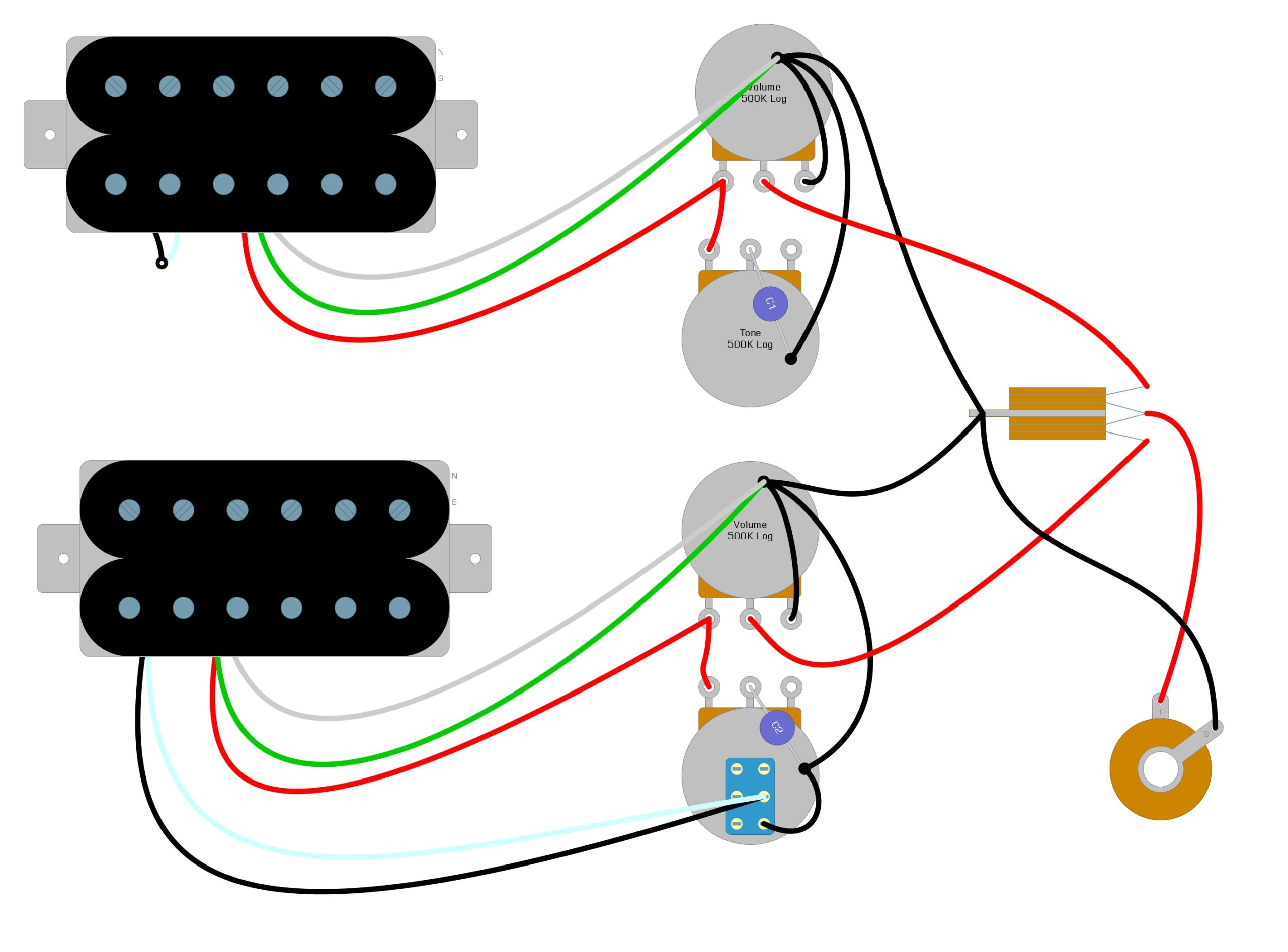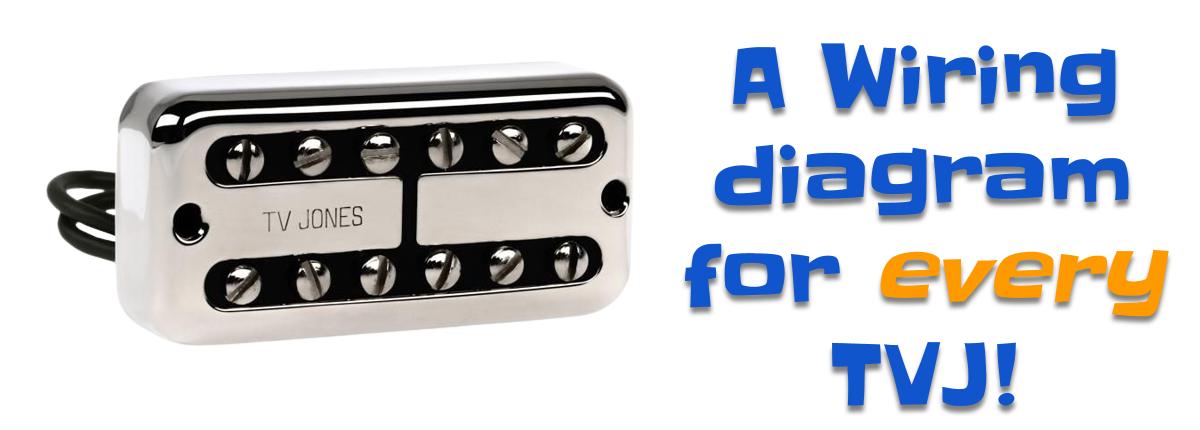
By Ed Malaker
Posted 05/24/2022
Today, we’ll be illustrating a TV Jones pickup installation guide. With this, you’ll be able to install any model of pickup that TV Jones makes. We’ll cover single coils, P90s, and humbuckers, and we’ll even toss in a diagram showing you how to perform the coil-split modification on your guitar.
Before You Get Started
This TV Jones pickup installation guide aims to give you a quick reference of diagrams and illustrations so you can easily get any of the brand’s pickups installed into your guitar. It is not a step by step-guide-as, we have many of those on this site already. If you do not know how to read the schematics on this page and would like a more beginner-friendly approach, we recommend the many wiring diagrams we have here at Humbucker Soup.
TV Jones Pickups
TV Jones was founded in 1993 by Thomas Vincent Jones, who had already been working on pickups for some time before starting his own business. He is an independent consultant to the Gretsch Guitar Company, and he has several types of pickups that offer a wide range of tonal solutions for any guitar player.
Vintage Stratocaster Wiring
The Fender Stratocaster uses three single-coils and a five-way switch. Single coil pickups have two wires corresponding to the beginning and end of the coil. The Hot almost always goes to the switch, while the Ground goes to the back of the volume pot. While the wires can be any color, most guitar manufacturers, including TV Jones, use white as the Hot and black as the Ground. TV Jones makes great single-coil pickups, including the Starwood Strat line.
In Example 1, we illustrate a common wiring diagram for a Fender Stratocaster.
Example 1
Vintage Telecaster Wiring
Another single-coil guitar Fender makes is the Telecaster, but there are some distinct differences. The neck pickup on the Telecaster is usually slightly smaller, while the bridge pickup sits on a special plate that grounds it. Most brands, including TV Jones, keep the black and white wiring scheme for the bridge pickup, but switch to a yellow and black wiring scheme where yellow is Hot and black is Ground for the neck pickup.
In Example 2, we illustrate a common way to install TV Jones pickups in a Fender Telecaster.
Example 2
Vintage P90 Wiring
The vintage P90 is yet another type of single-coil pickup, but the Gibson company invented this one. P90s look like a humbucker but they have only one coil, and they usually have only one wire coming from the pickup. Close inspection will reveal a single colored wire, typically white or black, surrounded by a braided metal wire. On this type of pickup, the colored wire is the Hot, while the braided metal wire is the Ground. TV Jones has great Telecaster pickups, including the T90 series.
In Example 3, we illustrate a common way to install TV Jones P90s in a Gibson Les Paul.
Example 3
Humbucker Wiring (Braided Wire)
Most vintage humbuckers, as well as many modern humbuckers, use the same wiring scheme as the P90s, with one colored wire inside a braided metal wire. In many cases, if ordering online, you can choose to purchase your humbuckers with this wiring scheme.
In Example 4, we illustrate how to install vintage, braided wire humbuckers in a Gibson Les Paul.
Example 4
Humbucker Wiring (4-Wires)
Many modern humbuckers have four colored wires and one bare wire. It needs four wires because each coil has two wires, and the bare wire is the chassis Ground. The downside to using this style of humbucker is that you must connect the two coils manually, which usually requires soldering two of the wires together. You know which wires to solder together and which wires are Hot and Ground by looking at the wiring code.
TV Jones Wiring Code
- Red= Hot
- White + Black = soldered together and taped off
- Green + Bare = soldered together; Ground
In Example 5, we illustrate the TV Jones wiring code.
Example 5
Once you have the Hot and Ground, you can install your pickup the same way you did the others. We illustrate a common way to install four-wire humbuckers in a Gibson Les Paul in Example 6.
Example 6
Humbucker Coil-Splitting (4-Wires)
Once you have the four-wire humbucker installed, it’s very easy to perform a coil-split modification. To do so, you only need to convert your tone control to a push-pull pot, as we demonstrate in Example 7.
Example 7
With the tone control converted, you need to connect the black and white wires from the TV Jones humbucker to the middle lug of the switch mechanism on the push-pull pot and add a short Ground wire from the bottom lug to the back case of the push-pull tone control.
We demonstrate these connections in Example 8.
Example 8
Humbucker Wiring (4-Wires) Alternative
As we mentioned above, every humbucker has two coils that we usually label north and south. Each coil has two wires, a start, and a finish. In most cases, we twist the two finish wires together, and one start (usually the north coil) becomes the HOT, and the other will be the GROUND. However, you can also twist the two starts together instead and use one finish as the HOT and the other as the GROUND, which TV Jones actually recommends for their pickups.
We put our version first because it is the standard way to wire humbuckers, and we like to keep things uniform, but either method will work fine. If you have more than one humbucker in your guitar, we recommend using the same scheme for each, even if they are different brands, as using different schemes might cause some slight phase cancellation. You can use the same diagram as above to install the pickups but switch the humbucker wires to the wiring code below to use the TV Jones Alternative Humbucker wiring.
TV Jones Alternative Wiring Code
White = HOT
Green + Red = Soldered together and taped off
Black + Bare = GROUND
Conclusion
All of the installations are easy to complete and only require you to make a few connections. No matter what type of pickup it is, installation is pretty much the same across the board. Hot usually goes to a lug on the switch or the volume pot, and Ground goes to the back of the volume pot.
We hope you have enjoyed reading over this pickup installation guide and have found it helpful and informative. If it has helped you get your pickups working, please feel free to share this guide on Facebook and Twitter. For more articles on guitar electronics, visit humbuckersoup.com.


